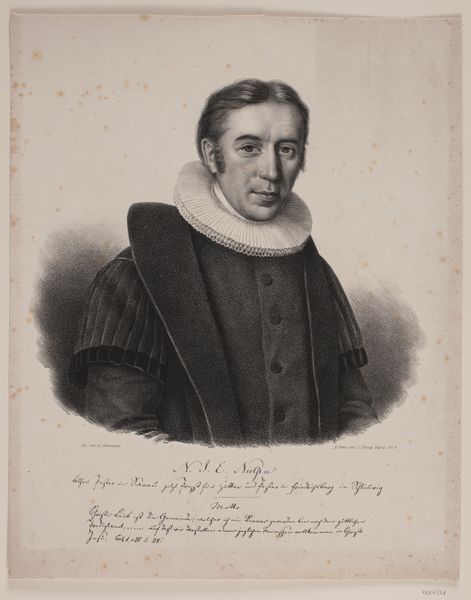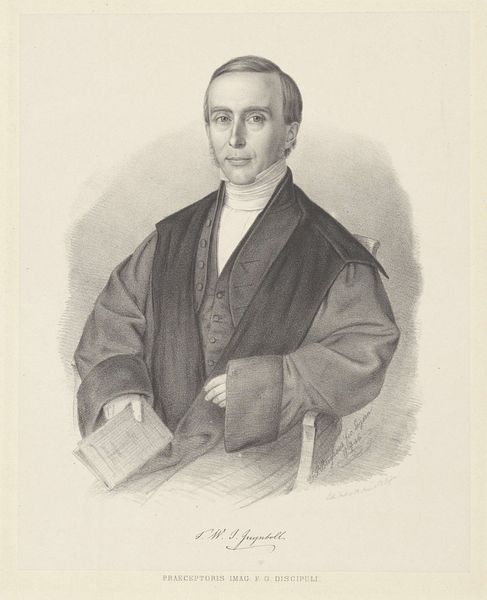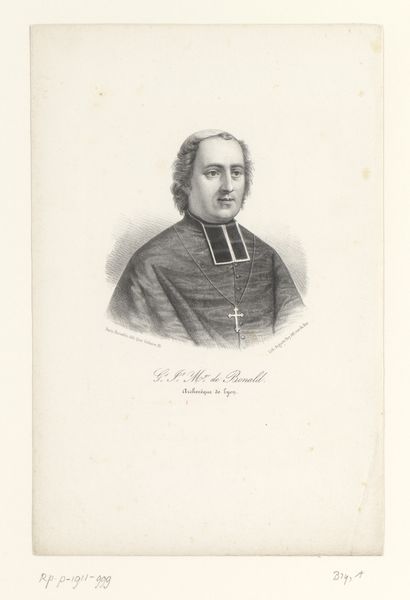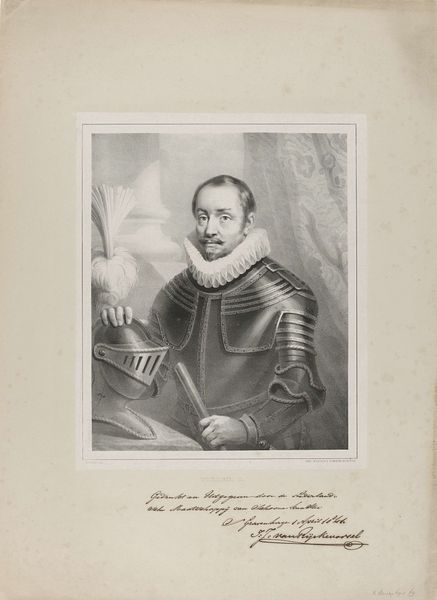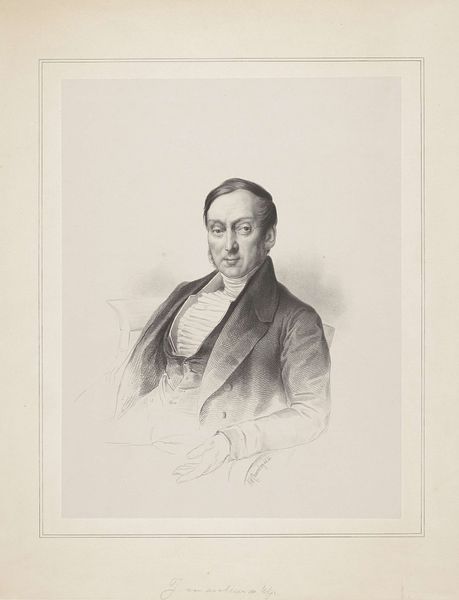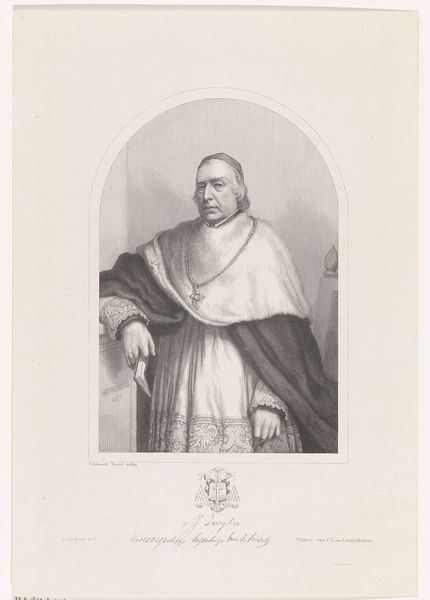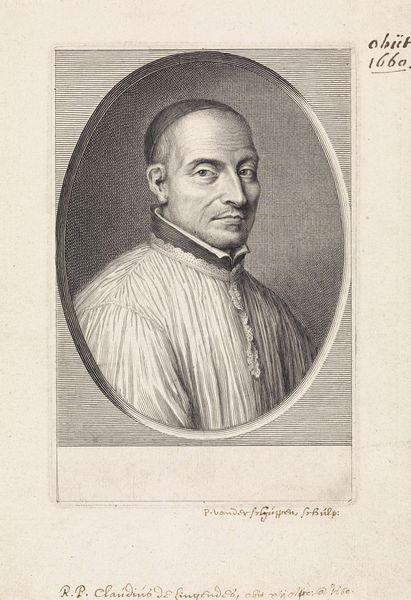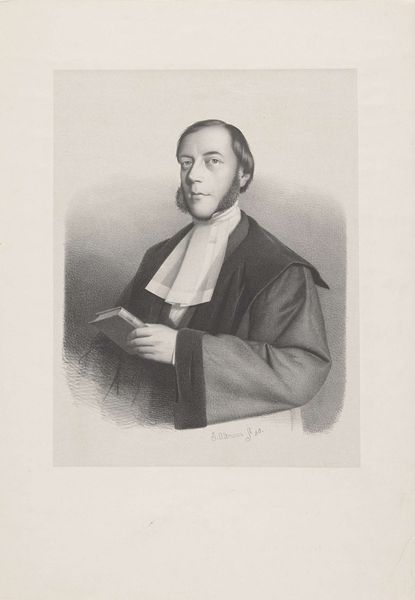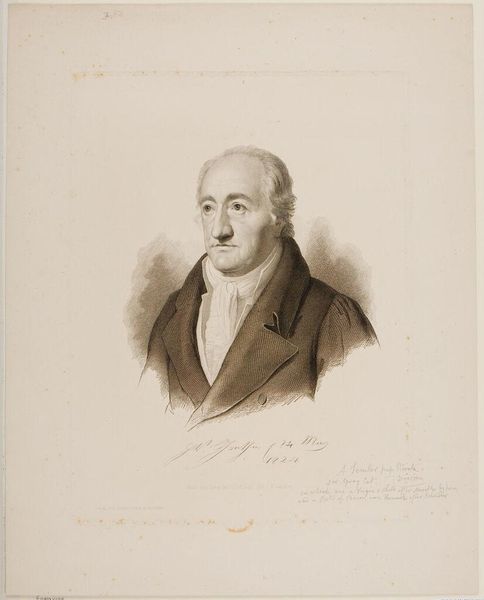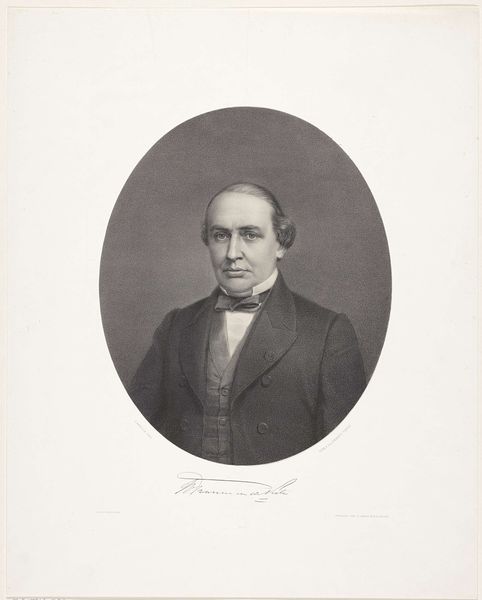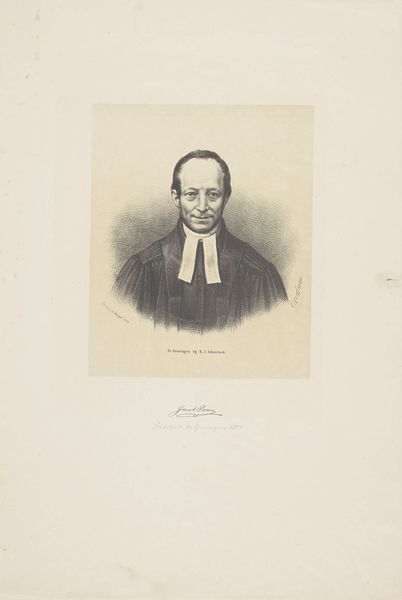
Dimensions: height 363 mm, width 275 mm
Copyright: Rijks Museum: Open Domain
Editor: Here we have Adrianus Johannes Ehnle’s "Portret van Jan Baptist David," created in 1854, using graphite and charcoal. There's a somber, almost stoic quality to the figure, and I am curious to hear your interpretation of it. Curator: I see a portrait embedded in the complex social and intellectual currents of 19th-century Europe. It invites us to consider questions of power, representation, and the construction of identity within specific historical contexts. David, the subject, looks every bit the intellectual. I’d want to understand his social position, and the story this portrait is meant to tell. What was David’s role in society, and how might Ehnle’s artistic choices reflect or even challenge prevailing ideologies? Editor: David was a professor and an important figure in the Flemish Movement. So, would you say that Ehnle’s choices glorify him as a figure of authority? Curator: The Romantic style, with its emphasis on individualism and emotion, further complicates this. While it may seem like straightforward glorification, perhaps there's also an exploration of inner life, a subtle commentary on the burden of leadership, or even a negotiation of Flemish identity in a rapidly changing Europe? Who commissioned the portrait, and why? Editor: That is interesting; the museum label doesn't mention the commission. This has certainly shifted my perspective! Initially, I just saw a formal portrait. Curator: Exactly! Looking beyond the surface to excavate the layers of meaning embedded within the artwork transforms our understanding, allowing us to connect it to larger historical and social narratives. Editor: I'll be sure to consider these contextual factors when examining portraits from this period going forward! Thanks so much.
Comments
No comments
Be the first to comment and join the conversation on the ultimate creative platform.

